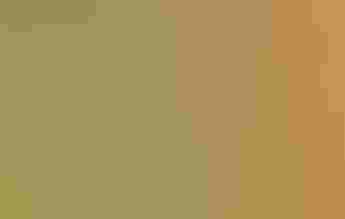
La página que intenta visitar sólo está disponible en inglés. ¡Disculpa!
The page you are about to visit is currently only available in English. Sorry!

Have you ever gone shopping for a native plant at a nursery? Maybe you found exactly what you were looking for amid a wide selection of plants indigenous to your region. More often than not, however, a gardener’s quest to buy native plants can be futile. If the nursery even has natives, the selection will likely be slim—and good luck finding a staff person who knows anything about them.
Partly it’s an image problem, say native plant proponents. There is a common misconception that indigenous plants are weedy—that if plants can be found growing in a nearby woodland, they have no place in an ornamental garden. Not so, says Bringing Nature Home author Doug Tallamy, noting that it’s a matter of perspective. “If you go to the fine gardens of Europe, many of the plants they display are from North America, because to them the plants are exotic.”
Aesthetics rule the horticultural industry, he laments. “It’s like fashion.” Each year the industry churns out new versions of garden favorites (also known as cultivars), making flowers bigger, changing a plant’s color, or altering its shape. Trouble is, each tweak can make a plant less functional. For instance, altering a flower’s shape might make it incompatible with pollinators. “Their mouthparts can only pollinate plants with a particular morphology,” says Tallamy. “And if we change that morphology, we’re going to change the pollinator community.”
Thus the challenge is not only getting the nurseries to stock native plants, but also getting them to stock the right ones. One of the most common questions Tallamy hears when he is giving talks is whether a cultivar of a native plant is as good as the straight species. “I get that because when people go to a nursery to buy a native plant, all they can find are cultivars of that plant. And they worry: Is this the same thing? Is it good enough?”
While there isn’t enough science to offer a certain answer, Tallamy makes some predictions. For example, if you take a plant with green leaves and selectively breed it to become purple, you create a leaf loaded with anthocyanin, a feeding deterrent for insects. As a result, you may not find as many caterpillars gnawing on the plant. That might seem like good thing, but it’s a disaster if you’re trying to create wildlife habitat. No caterpillars, no birds.
On the other hand, there are cultivar changes that may not do any harm, says Tallamy. Does it make a difference if you take a skinny plant and make it fat? Make a tall plant short? Perhaps not, since such changes may not affect the leaf chemistry.
There’s one other consideration: Cultivars are mostly clones, allowing them to keep the trait that was selected for to begin with. Botanists know that cloning—i.e., creating organisms with no genetic variation—makes plants more susceptible to disease. If a bad bug hits a grove of trees that are genetically varied, chances are at least some number—even if only 1 percent—of those trees will survive, allowing for regeneration. With no diversity, clones get crushed; nothing will be spared.
Native plant proponents would like to convince nurseries that they can still sell their cultivars, but sell the straight species, too—and let consumers determine what they want to buy. “If we sold plants based on their function and people recognized what that function was [say, for instance, providing declining monarch butterflies with vital habitat], we could market them that way,” says Tallamy. “My contention is they will buy them, even if there’s some variant that might have a bigger flower attached to it.”
As the public learns about the importance of native plants for wildlife including birds, bees, and other pollinators, demand for native plants is growing. You can be part of this change: Search Audubon's native plants database to create a list of plants native to your area, get connected to local native plant resources, and find local nurseries. Read more about planting for birds on the Plants for Birds webpage.